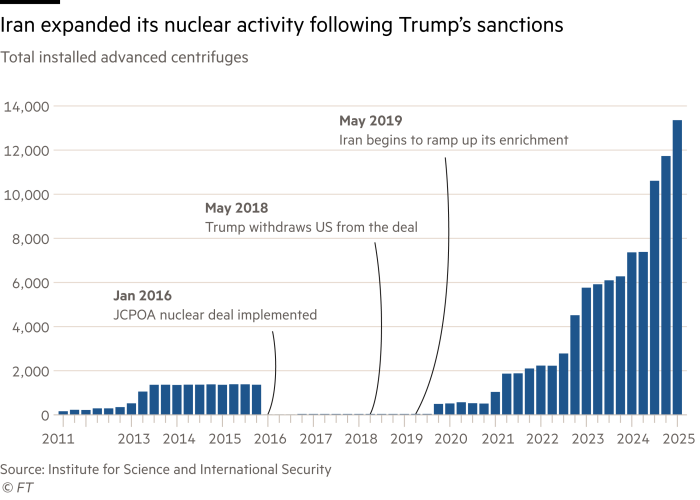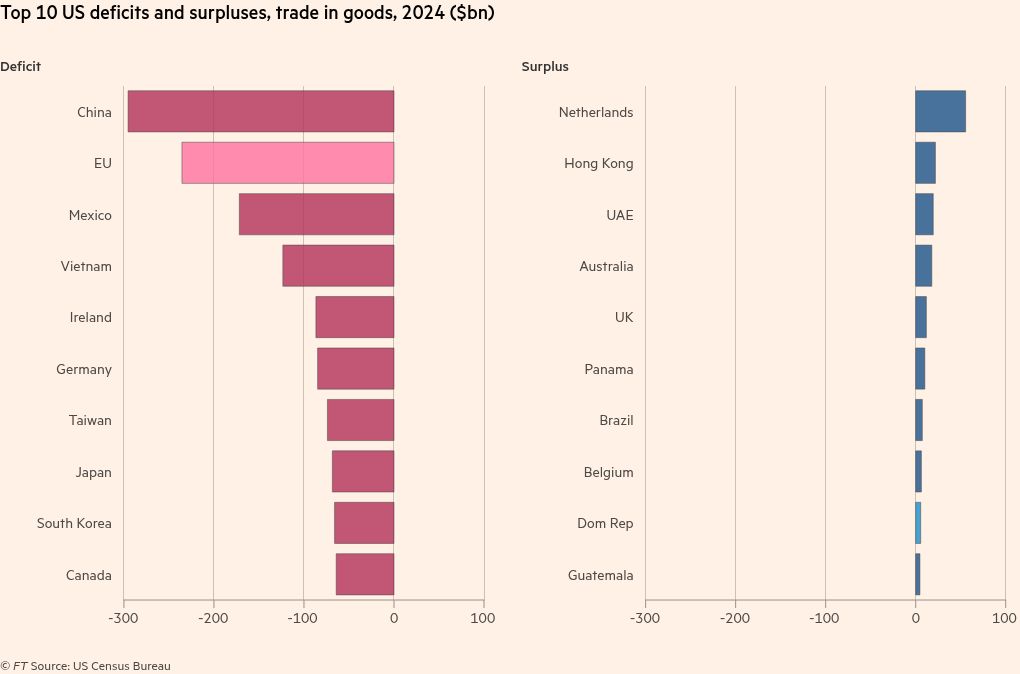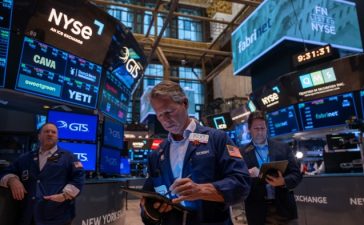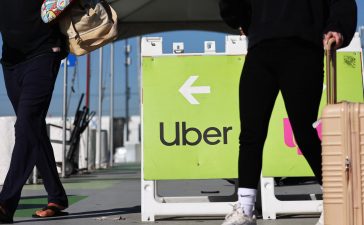This is an on-site version of the White House Watch newsletter. You can read the previous edition here. Sign up for free here to get it on Tuesdays and Thursdays. Email us at whitehousewatch@ft.com
Good morning and welcome to White House Watch! As we plot our April Fool’s pranks, let’s take a look at:
On Donald Trump’s calendar, tomorrow is “liberation day”.
What is he celebrating? A global commerce rebalancing that will end an era of trading partners ripping off the US, according to the president.
But much of the country is uneasy about tomorrow, when Trump will set high new levies on imports from a wide range of allies and adversaries alike. His “reciprocal tariffs” are intended to punish other nations for their own duties on US goods, plus other policies Washington dislikes.
Canada, Mexico, the EU, China and India will probably be among affected trading partners. Foreign diplomats and officials, business leaders and lobbyists have been pleading with the administration to pare back their plans, but White House press secretary Karoline Leavitt said yesterday that there would be “no exemptions at this time”.
The sweeping levies on imported goods will take American protectionism to a level not seen since the second world war.
And there remains a lot of uncertainty. There’s already been a US equity sell-off, a drop in consumer confidence and warnings from pollsters over the president’s handling of the economy.
“I think there’s an enormous amount of anxiety,” Douglas Holtz-Eakin, a former White House official under George W Bush and founder of the American Action Forum, told the FT’s James Politi.
The White House is running “a real risk of recession”, Holtz-Eakin added, in its attempt to raise tariffs that Trump trade whisperer Peter Navarro had said could be worth as much as $600bn a year.
Tomorrow, Trump could kick off a $1.4tn trade war. An econometric analysis of a worst-case scenario, where US trade partners retaliate against Washington, found that it could result in widespread global trade disruption, rising prices and falling living standards.
It seems Wall Street is not looking forward to “liberation day”, stocks posted their worst quarter in almost three years yesterday on fears that the tariffs will usher in a period of stagflation.
The latest headlines

What we’re hearing
Elon Musk’s latest electoral obsession is a state supreme court race in Wisconsin.
The billionaire Trump adviser has pumped an unprecedented $22mn into conservative Brad Schimel’s campaign for a seat on Wisconsin’s highest court. A win for Schimel over opponent Susan Crawford would reverse the liberals’ majority on the bench.
Musk also appears laser-focused on this race because of how Wisconsin’s electoral map could, in two years, shape the balance of the US Congress.
Musk’s cash injection has helped it become the most expensive judicial race in US history, with total spending expected to top $100mn.
As Wisconsinites hit the polls today, Democrats are hoping that a backlash against Musk will help drive their supporters to vote and deliver a victory.
If it weren’t for Musk, Scott, a 52-year-old Republican-leaning IT worker in Appleton, Wisconsin, might never have turned out to vote. Scott, who is planning to vote for Crawford, told the FT’s Joe Miller:
It’s concerning that the world’s richest person is getting involved in politics.
He certainly has the resources available to him to possibly sway some elections.
The Democratic party has seized on the fact that Musk is less popular in the state than Trump, flooding the airwaves with an advertising campaign called “People vs Musk”.
It features the Tesla boss wielding a chainsaw and celebrating cuts made by his so-called Department of Government Efficiency (Doge), and a clip of him making a gesture at a Trump rally that critics claimed was a Nazi salute.
The Democrats’ playbook is being watched closely by campaign strategists across the country, since Musk is expected to support pro-Trump candidates in races of all sizes ahead of the 2026 midterm elections.










